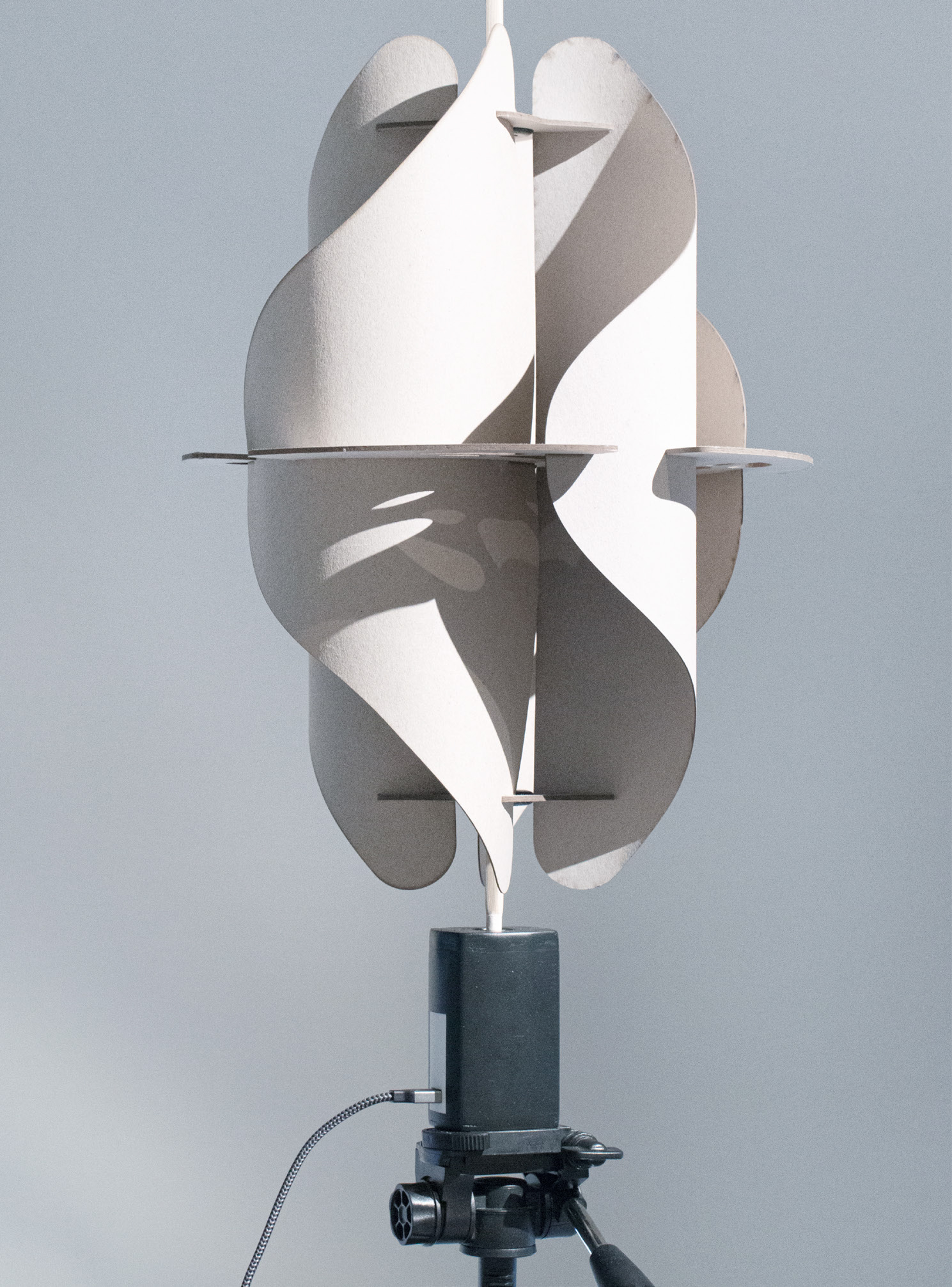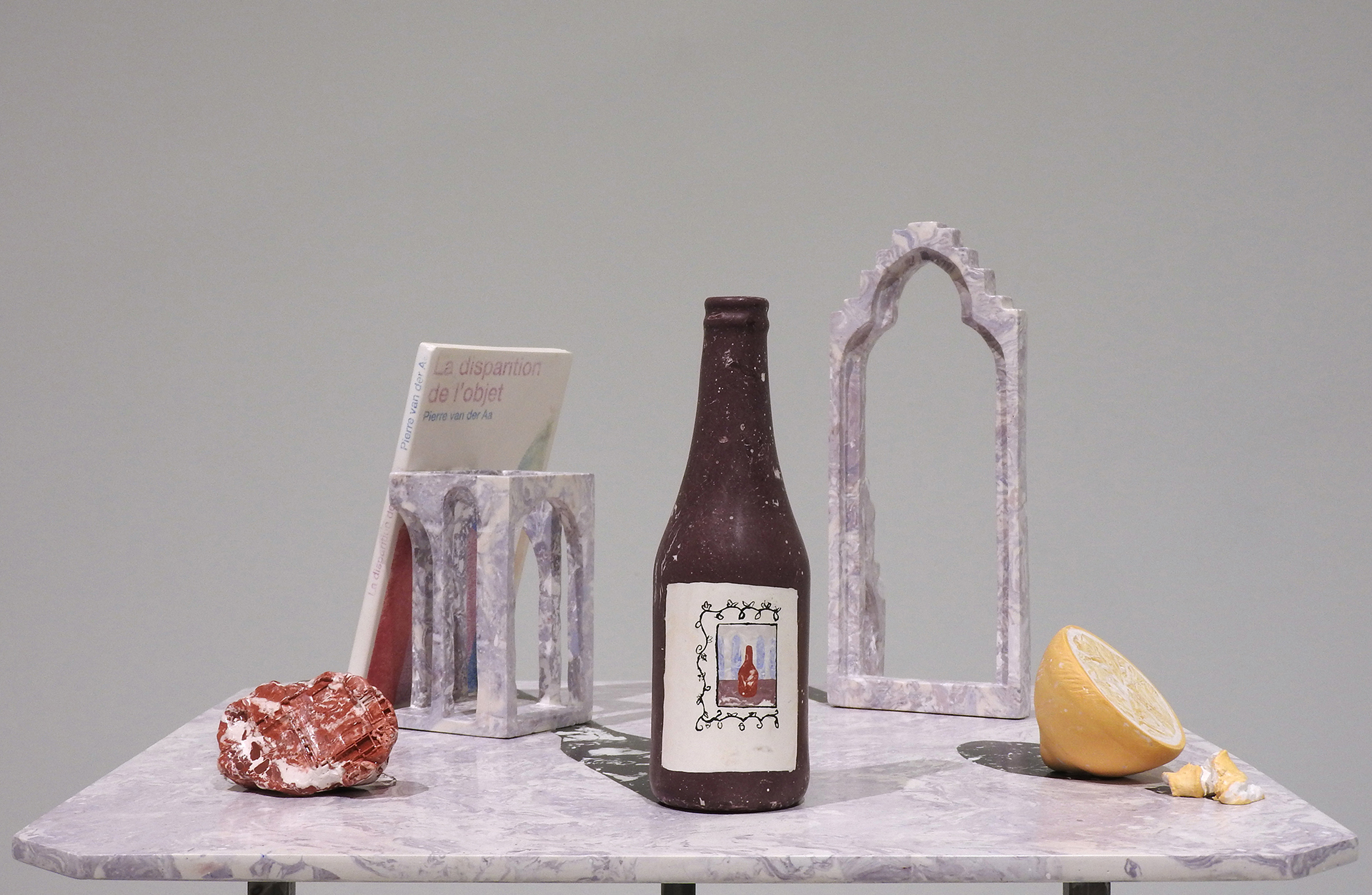École des Beaux-Arts, Marseille
Keanu Lebon, Alban Magd, Lucian Moriyama, Estelle Pierson
The François Bret Prize of the Fine Arts College of Marseille is awarded each year by a jury of professionals to two young graduated of the College, one in art, one in design, who are put in a spotlight during the ART-0-RAMA fair and are coached by the members of the jury.
Due to the fair cancellation in 2020, we are happy to show this year Lucian Moriyama (Art) and Estelle Pierson (Design), 2020 laureates beside Keanu Lebon (Art) and Alban Magd (Design), 2021 laureates.
The painter François BRET was the one who, as a director, convinced the municipality of Marseilles in the late 60’s to build the school on the Luminy area (located in the Calanques National Park in the south of the city).
Involved in the reform of art and architecture education in the seventies, he has been, for example, one of the first directors in France to give photography a proper place in an art school, by inviting Lucien Clergue (a famous french photographer from Arles, France) among others. He also welcomed the « Support/Surface » painters in the Art College and gave an opportunity to the famous sculptor César to teach there. It is under his direction that the school actually entered a new era. In 1976, the local youthful contemporary creation scene had an exhibition in the Museum of Modern Arts in Paris.
Giving the name of François BRET to this Prize doesn’t mean looking backwards but building a bright future on deep historical roots.
Keanu Lebon
Keanu Lebon was born in 1994 in Évry in the Paris area. He obtained his DNSEP at Marseille School of Fine Art with the congratulations of the jury in 2021, as well as the François Bret Prize under the artistic category. The work for which he receives this distinction combines sculptures, performance, and curatorial works alongside other students within the space of an amphitheatre. In 2020, he participated in a collective exhibition at the Ateliers du Wonder in Paris, titled Chaudron Roulant, Vitesse Ardente. In August 2021, his work is exhibited at Art-O-Rama and at Ateliers Jeanne Barret for a show welcoming the work of Lapin-Canard (artist poster publications).
“My works are narratives on distant historical moments where my movements and gestures take possession of forms whose evolution I document (the small stories interacting with the greater history). The objects I extract from these expeditions deal with the relationship between the organic and the industrial and the visceral relationship
that we have with these objects: it is a question of certain violence, of a relationship of consumption, of need, of necessity … In my sculptures, I mix artisanal methods with factory materials, evoking classic forms recurring in the history of sculpture: a bell, a horse, a piano. More recently, I try to portray distant but still familiar figures through the
melting of metals to resemble the emergence of organisms.”
Alban Magd
Alban MAGD (born in Paris in 1996) is a designer since June 2021,
after two years of master’s studies at the Marseille-Mediterranean Higher School of Art and Design. He studied between 2016 and 2018 in Monaco at the Ecole Supérieure d’Art et Scenographie, Pavillon Bosio, where he obtained a DNA (national art diploma). He also studied for one year at the STRATE design college in Sèvres in space design section.
In 2021, the «Radiolaire» project, won the Minimaousse 8 competition at
the Cité de l’Architecture in Paris (team made up of Alban Magd, Elisabeth Verrat, Mathieu Gourbeyre). The same year, Alban Magd won the Bret prize for exhibiting his work at the Art-O-Rama exhibition in Marseille.
Alban Magd’s work as a designer focuses on walking in the city and on
metropolitan paths. His project takes the form of a walking itinerary
that takes shape on the territory of Marseille. Like an extension of the
GRP 2013 (long-distance hiking trail), the urban walk crosses the urban
landscapes of the french Mediterranean city in the footsteps of the L2
motorway project (1933) and the Boulevard-urbain-sud (2018). Between
urban shelters and climbing holds, his work inhabits and punctuates the
itinerary to introduce new uses in the city and to breathe new life into the vagrants lands created by the unconstructed segments of the L2.
Lucian Moriyama
Lucian Moriyama (born Honolulu, 1991) is an artist and writer. He studied at the University of Glasgow and the Beaux-Arts de Marseille, where he received the Prix François Bret. He has presented his sculptures at Manifesta 13 (2020), Printemps de l’Art Contemporain (2019), and the Fondation Francès (2021) and has presented his artist books at Tramway, Glasgow (2018) and at the Mucem, Marseille (2020). He is an upcoming resident at the Villa Empain, Brussels (2021) and the Collection Lambert, Avignon (2021) and will present his work at Art-O-Rama, Marseille and Paréidolie, Marseille (2021).
Lucian Moriyama revisits cultural and material histories, excavating utopian forms and exotic fantasies. He reworks these elements into his sculptures, art books, and recordings, creating objects that challenge the traditions of modernism. Artifice, fiction, and ornament emerge as central themes in his explorations of art history, architecture, music, colonial exhibitions, World’s Fairs, and exotica.
Estelle Pierson
Estelle Pierson is a designer born in Toulouse, France in 1992. After studying Interior Architecture, she joins the school ESADMM in Marseille, and achieve her studies there. During her master degree, she had the opportunity to study for one year in a Design school in Rotterdam, which provides her with a major tilt and a new axis about the quality of her work.
She will present a part of her work at “Art-O-Rama” in Marseille (2021).
She founds her inspiration in architecture and landscapes.
Her way of work is to photograph and archive different locations, as landscapes that are or will be disappearing. Then she researches what these locations might have been in the past, notes how they are now and try to imagine how they will be tomorrow.
« I’m very interested in the notion of ruin and landscapes which I try to mix, in the aim to have a concrete approach of the global warming”.
“To make visible the change by architecture and landscapes.”
“An architecture that will become the trace of change.”
This exhibition probes natural spaces that surround us and bring out their stories that inhabit them, from the more or less visible traces that have spread there over time. The landscapes are the guardians of the memory :
One of the looks that have landed there; of the footsteps that have trod them; of the gestures of those who shaped them. These traces fade away, reappear, move, they change…
Beaux-Arts de Marseille – INSEAMM
The Beaux-Arts de Marseille is an institution of higher learning under the authority of the Ministry of Culture and supported by the City of Marseille. The school issues diplomas giving the degrees of Bachelor and Master 2. It trains artists, designers and creators in the field of plastic and visual arts.
Since March 2020, Les Beaux-Arts de Marseille and the Conservatoire Pierre Barbizet have been two member institutions of the Institut national supérieur d’enseignement artistique Marseille Méditerranée (INSEAMM).
Created by Marseilles artists in 1752, it has been located since 1969 on the Luminy campus in an architectural complex labelled “Remarkable Contemporary Architecture”.
A member of the L’École(s) du Sud network, which brings together the region’s higher art and design schools, the school joined the regional conference of the grandes écoles of PACA (CRGE-PACA) at the end of 2018, and joined the Equal Opportunities in Art and Design Schools programme, initiated by the Culture & Diversity Foundation.
In order to offer forms and contents of teaching that adapt to the evolution of creation, and with the strength of its 50 partner schools around the world and its professionalization programme, the School has acquired new tools: a high-tech digital platform and spaces dedicated to manufacturing (printing, publishing, 3D manufacturing workshop), while strengthening its technical workshops (wood, metal, silk-screen printing, engraving, clay, glass, moulding, painting, model, design, cinema, photography, sound. ) in order to offer its students the full range of tools for contemporary creation.
Its public preparatory class for the entrance examinations to higher art schools is a member of the APPEA (national association of public preparatory classes for higher art schools).
The Institut de formation artistique Marseille-Méditerranée groups together public workshops, holiday courses (amateur practice), and the Certificat de Formation de Plasticien
Intervenant-e (CFPI).
Some of the artists and designers who have graduated from the school :
Mathieu K. Abonnenc (visual artist), Marc Aurel (designer), Richard Baquié (visual artist), Gilles Barbier (visual artist), Cécile Beau (artist, sculptor, video maker), Louidgi Beltrame (photographer, video maker), Amélie Bertrand (visual artist), Michel Blazy (visual artist), Fouad Bouchoucha (visual artist), César (artist, sculptor), Sylvain Couzinet-Jacques (photographer), Olivier Dahan (film-maker), Amélie Derlon (video-maker), Samuel Gratacap (photographer), Valérie Jouve (photographer), Anita Molinero (visual artist), Mountaincutters (visual artists), Yazid Oulab (visual artist), Marine Peyre (designer), Flavie Pinatel (film-maker, director, visual artist), Gérard Traquandi (visual artist)…
The school in figures :
12,600 m2, 5,800 m2 of workshops, 380 students, 65 teachers, 500 members in the public workshops, 18 students in the preparatory class, 15 students for the CFPI, 20 students in international mobility per year, 50 partner institutions, 25% foreign students (Asia, Quebec, etc.)
Beaux-Arts de Marseille – INSEAMM
184, avenue de Luminy – CS 70912 – Marseille cedex 9 T (0) 4 91 82 83 10






